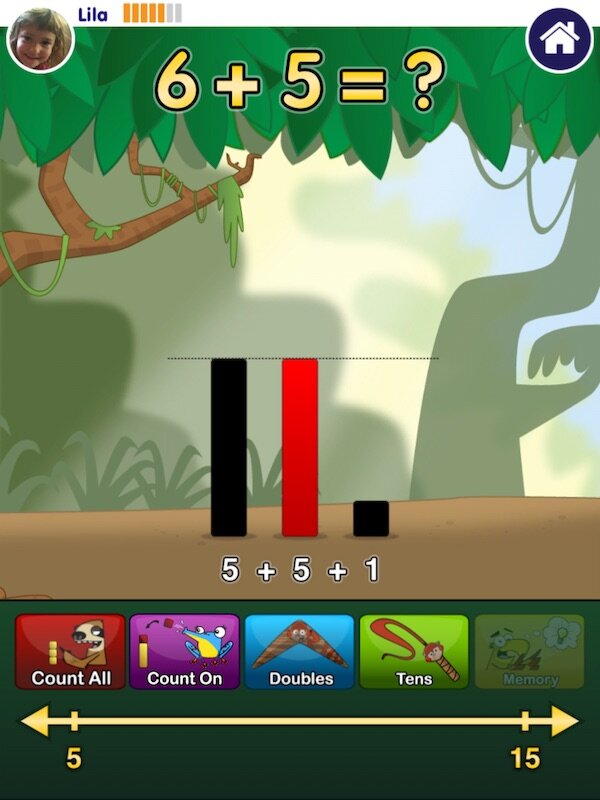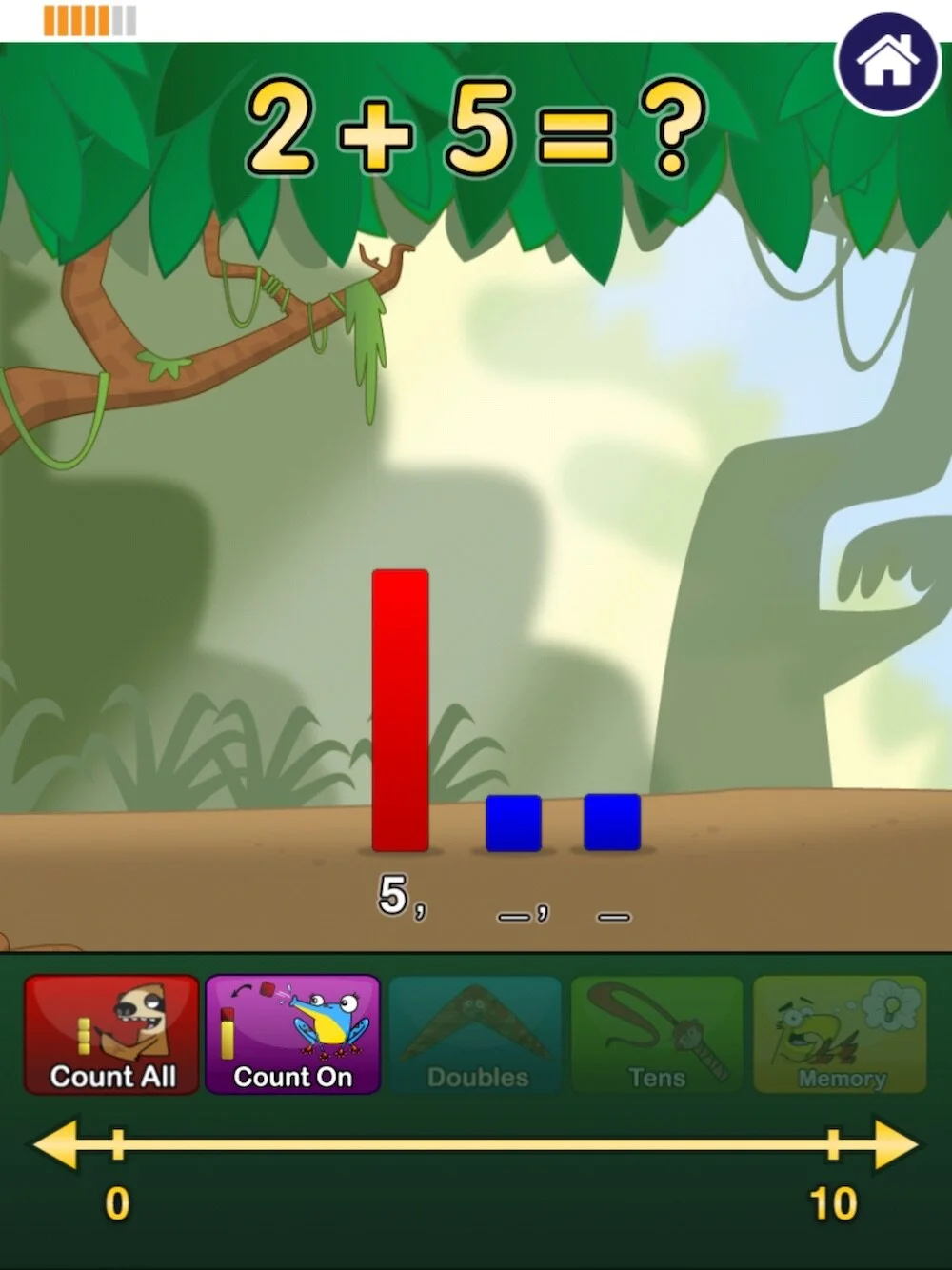When students are struggling to learn their addition facts, you may be tempted to use drill-based activities like flash cards, timed tests, and worksheets. Extra drill can have benefits, but your time may be better spent focusing on strategies. In a research study, we found that kids’ addition fact fluency improved more when playing strategy-focused games than when playing drill-based games.
Instead of heading directly to the flash cards, consider what the research shows about how different students learn to add. What do kids who struggle find difficult? And how can we best support these students?
TYPICAL DEVELOPMENT - SOLVING 3 + 4
When first learning to add 3 + 4, young children will count all the objects or use their fingers to help them Count All. You may even notice students count the 3, count the 4 and then count them all. Starting in Kindergarten, students become ready to use the Count On strategy, starting with the 4 and counting up 5, 6, 7, often using their fingers for helpful support. In order to use this strategy, a child needs to trust that 4 represents 4 objects that don’t need to be re-counted, and the child needs to be able to know what number comes after 4 without starting from 1.
Then as students start to recognize the connections between addition facts, they will now be able to see how 3 + 4 is related to the doubles fact 3 + 3 (Derived Facts strategy). These students can tell you that 3 + 4 is going to be just one more than 3 + 3. This is an example of the near doubles or doubles-plus-one strategy. Other Derived Facts strategies include doubles-plus-two, being able to see how 6 + 8 is the same as 6 + 6 + 2, and the near tens strategy, knowing that since 8 + 2 = 10, then 8 + 3 will be 11.
Finally, with more practice students will memorize their addition facts, and solving these problems will be automatic. Being able to fluently add with automaticity (fact fluency) is an important early math goal, because it makes it much easier for students to work with multi-digit numbers and problem solve. Our brains can only handle a certain amount of work at a time (cognitive load), so if students have their facts memorized, they can spend more energy on understanding what’s happening in the problem and thinking about regrouping.
STRUGGLING LEARNERS
Typically, students gradually adopt more sophisticated strategies as they learn, progressing from Count All to Count On to Derived Facts and, finally, Memory. However, poor math performers tend get stuck using Count All as their primary strategy 1 - 2 years longer than typical kids. Instead of transitioning to Count On in Kindergarten, these students are still using Count All in first and second grade.
In addition, struggling math learners often never recognize the connections between facts, so they never develop the Derived Facts strategy and see each problem as something new to learn. And many of these students have poor memory, so they continue to Count On using their fingers into upper elementary and beyond.
Strategy-Focused Instruction
After learning about this research and working for many years to support struggling students in developing these strategies, we decided to develop a game focused on addition strategies: Addimal Adventure. The Addimals app makes these strategies highly visual and explicit, helping struggling learners access these efficient strategies and develop a strong number sense. By teaching addition strategies directly through a visual model, ALL kids are able to practice and learn these important strategies.
derived facts strategy (Near Doubles)
Students can use the Doubles boomerang tool to see how problems like 6 + 5…
… are related to doubles facts, so 6 + 5 is the same as 5 + 5 + 1.
count on strategy
Students can use the Count On tool to solve 2 + 5 by choosing to start with the 5 (or the 2)…
… and then press on the individual blocks as they count on two more: 5, 6, ?
Strategies are more effective than drill
To test the efficacy of our games, we randomly assigned students to play our strategy-focused games or traditional drill-based games, and we found that students’ fluency improved significantly more while playing the strategy-focused games. The same held true for struggling learners. Read more about the research study. Find out more about Addimals here.
Check out these research studies to learn more about addition strategies:
Geary, D. C., Hoard, M. K., Byrd-Craven, J., & DeSoto, M. C. (2004). Strategy choices in simple and complex addition: Contributions of working memory and counting knowledge for children with mathematical disability. Journal of Experimental Child Psychology, 88(2), 121–51.
Siegler, R. S. (1987). The perils of averaging data over strategies: An example from children's addition. Journal of Experimental Psychology: General, 116(3), 250.







